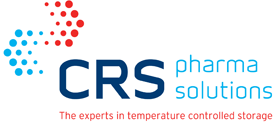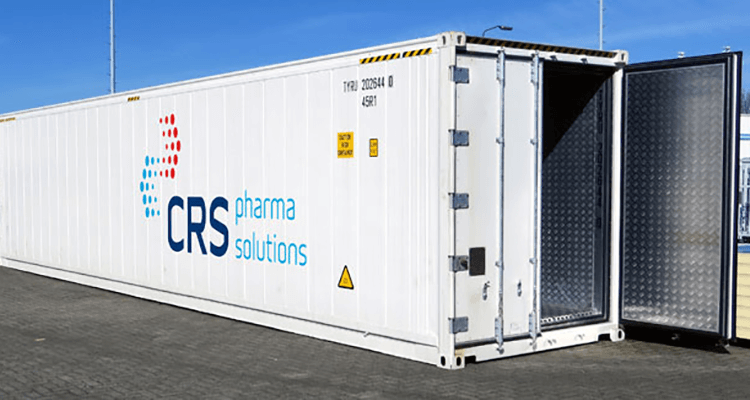There are so many things for Pharmaceutical manufacturers to consider when hiring or purchasing a cold store – one such consideration is the Irish Medicines Board’s Guide to Control and Monitoring of Storage and Transportation Temperature Conditions for Medical Products and Active Substances.
Now that’s a mouthful! So we’ve taken the IMB’s Guide and condensed it into the top 10 things you need to know about hiring cold stores.
When deciding on the type of cold storage solution to be installed the following should be taken into consideration:
1. Control
The level of control of the refrigerator unit
This is commonly referred to as the temperature range or temperature limits. For most cold chain products the temperature range is quite narrow (for example: 5°C+/-3°C for 2-8 products) It is more difficult to control the temperature within un-stocked cold rooms and freezer rooms as there is little or no product thermal mass present. This means the air within the chamber will fluctuate quickly so having adequate close control cooling systems with good airflow is essential to ensure that the air temperature in the room always remains within the specified limits even when product stock levels are at their lowest.
2. Condensate
The condensate from the chiller units should not be collected inside the cold store in an open vessel.
The main reason for this is to avoid water spillages within the room due to overfilled buckets or water containers, normally the condensate water from the evaporator will be pumped away or gravity fed to a waste water connection. Always ensure that P- traps are used in the connection to waste water drains in order to prevent noxious air or bad odours from back flowing into the cooler.
3. Auto-Defrost
Auto-defrost should be available and the temperature within the unit should not be affected during the defrost cycle. This can be achieved by having a second standby refrigeration unit installed so there is always one unit cooling during the defrost cycle. Alternatively, the defrost settings can usually be adjusted so there are more frequent defrost cycles with shorter durations and reduced defrost termination temperatures.
4. Back-up
The power back-up facilities for the unit itself and for the temperature monitoring and recording system.
A UPS battery backup will generally be adequate for the monitoring system but it is essential to ensure the onward forwarding system (sim card modem, phone line or broadband connection) is also installed on a power backup facility. If more than one cooling unit is utilised it is usually a good idea to stagger the start-up time so as not to overload the generator with all of the compressors trying to start at the same time.
5. Recording Probes
Recording probes should be independent of controlling probes.
Keeping these systems separate is essential to ensure that the monitoring and alarm system will still be active if there is ever a major shutdown fault or power failure of the refrigeration unit or temperature control system.
6. Internal Layout
The internal layout of the cold storage area.
Before using the coldstore an initial temperature mapping study should be carried out under representative conditions for at least 24 hours in both the empty and fully stocked states.
When mapping the fully stocked store, it is important to document the load and ensure that all available storage spaces are full so that the distribution of the cold air within the room can be checked for uniformity.
Often when large walk in and drive in coldstores are fully loaded there can be ‘dead spots’ in the storage areas furthest away from the cooling units. Product should only be stored in areas within the room that are proven to provide adequate temperature control within the specified limits. Air spaces should be left between the products so that the cold air can circulate without restrictions. SOP’s should ensure that no product is in direct contact with the floor or roof of the room or placed directly in front of the cooler fans.
7. Sensors
Recording sensors/probes are to be placed in locations with the greatest temperature variability as determined by temperature mapping studies.
In large coldstores the hot spots are usually located near the door and in the corners of the room furthest away from the cooing unit, while cold spots are normally found directly in front of the cooling fans. Monitoring probes should be placed in these worst case locations that are subjected to the most extreme temperature fluctuations.
If any changes are made to the room layout such as new shelving or racking layouts then the room must be remapped to establish if this has caused changes or restrictions to the air circulation. Similarly if the cooling equipment is replaced or changed then the mapping study should be repeated to ensure the temperature profile has not changed.
A risk assessment approach is recommended whenever significant changes have been made within the coldroom.
8. Calibration
Recording/monitoring probes should be calibrated regularly
As some temperature recording devices and sensors can gradually lose accuracy over time it is essential to ensure they are calibrated at regular defined periods (at least annually) based on a risk and reliability assessment.
Before purchasing temperature recorders or loggers, check that the probes are accurate to plus or minus 0.5°C and have them calibrated at 3 points across their normal recording range. For example you might use the 0°, 5°C and 10°C as 3 calibration points for probes used in a 2-8 degree application.
Always ensure that the calibration vendors certification is traceable to a national or international standard and that the reference instruments used are in good working order and suitable for the application.
For temperature mapping studies it is recommended all data loggers or sensors are calibrated before and after the mapping study is complete to ensure that they have remained accurate and reliable for the duration of the study.
9. Alarm System.
The requirement for installation of an alarm/alert system.
For large volume operations with high value product, a continuous monitoring system and real time alarm system should be installed. Following the initial validation of these systems it is important to ensure that alarms are frequently checked to ensure they are still functional as contracts on sim cards can be cancelled and old phone lines can be disconnected for numerous reasons including low usage.
The procedures for responding to alarms should be clearly defined so that there is always a keyholder available to open the premises for inspection if an alarm occurs during holiday periods or outside of normal working hours. A service level agreement or contract should be in place with the refrigeration maintenance company clearly defining the required response time to emergency callouts and the out of hours phone numbers to call in case of emergency.
10. Other considerations
Other considerations you may have overlooked?
Materials of construction: pay particular attention to the type of insulation used in the panels and specifically the fire class or rating of the insulation. This can make a big difference when taking out insurance policies
Fire detection and suppression: the coldstore installer will not provide these services so it is something that is often overlooked. Specialised bespoke detectors or sprinklers may be required as moisture and ice build-up can cause problems with the standard equipment
Pest proofing: remember to ensure the coldstore is fully sealed and that there are no gaps around or underneath the room. Additional bait boxes may be required depending on the size and location of the room.
Contingency: it’s a good idea to carry out a risk analysis on the worst case scenarios so that you are prepared and have a plan in place. In the event of compressor failure is there a standby unit fitted that will maintain the temperature while repairs are being carried out? Is there somewhere else lined up to store the product in a temperature controlled environment if unforeseen problems arise with your existing storage. Has this emergency storage area been temperature mapped and validated?
Thinking of hiring a cold store? Call us now on +353 469 435000 and talk to the team.







